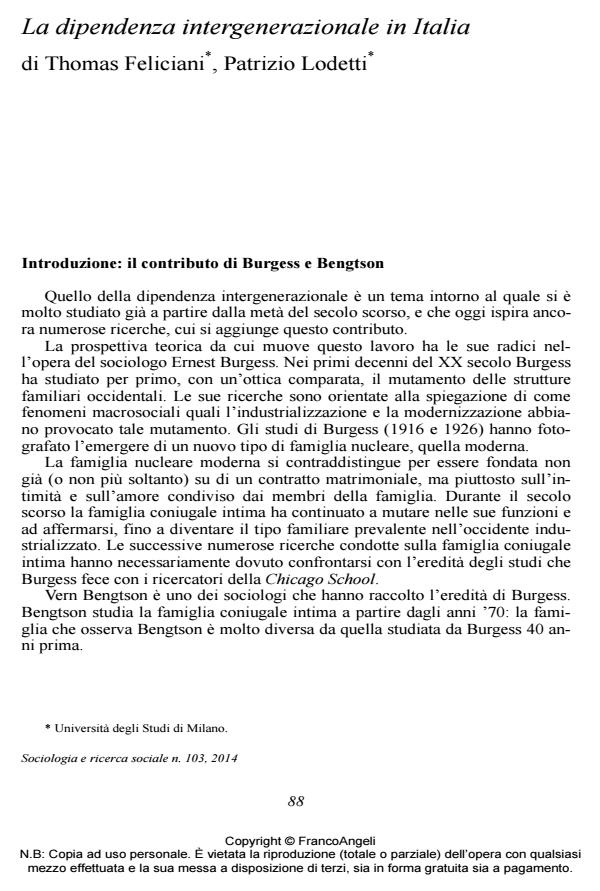Intergenerational Dependency in Italy)
Journal title SOCIOLOGIA E RICERCA SOCIALE
Author/s Thomas Feliciani, Patrizio Lodetti
Publishing Year 2014 Issue 2014/103
Language Italian Pages 25 P. 88-112 File size 249 KB
DOI 10.3280/SR2014-103005
DOI is like a bar code for intellectual property: to have more infomation
click here
Below, you can see the article first page
If you want to buy this article in PDF format, you can do it, following the instructions to buy download credits

FrancoAngeli is member of Publishers International Linking Association, Inc (PILA), a not-for-profit association which run the CrossRef service enabling links to and from online scholarly content.
This study is developed within Vern L. Bengtson’s theoretical framework: the western modernization process causes changes to the family’s nuclear structure. One of these changes is the rise of vulnerability concerning two generations, the oldest and the youngest ones, which results in increased intergenerational dependency. This paper aims to determine whether this theoretical approach applies to Italy’s current scenarios. A secondary analysis was carried out on several indicators, including measures of vulnerability and intergenerational dependency. Effects of growing interdependence on the distribution of workload in families will be discussed. The data considered supports the validity of Bengtson’s theory.
Thomas Feliciani, Patrizio Lodetti, La dipendenza intergenerazionale in Italia in "SOCIOLOGIA E RICERCA SOCIALE " 103/2014, pp 88-112, DOI: 10.3280/SR2014-103005